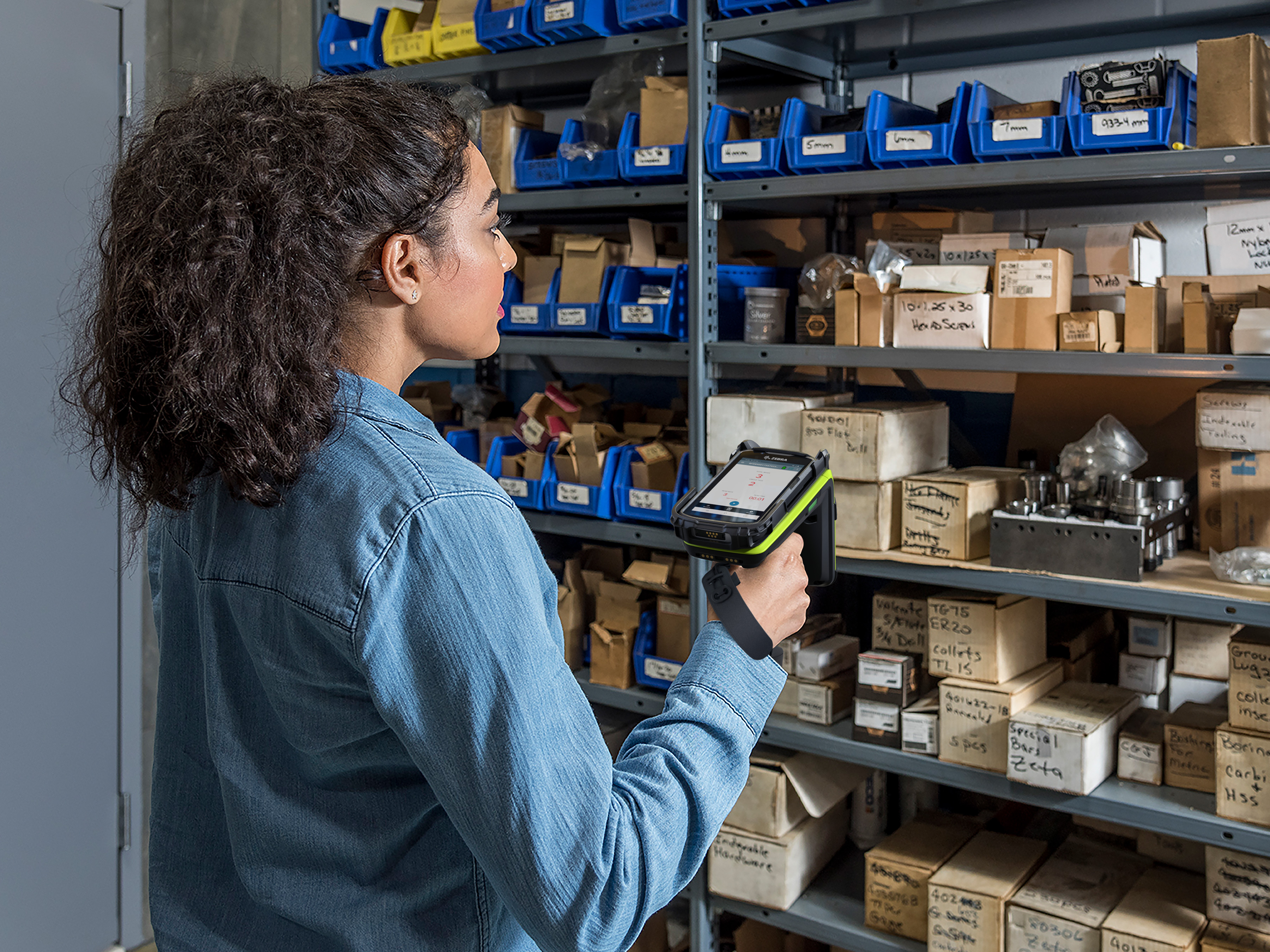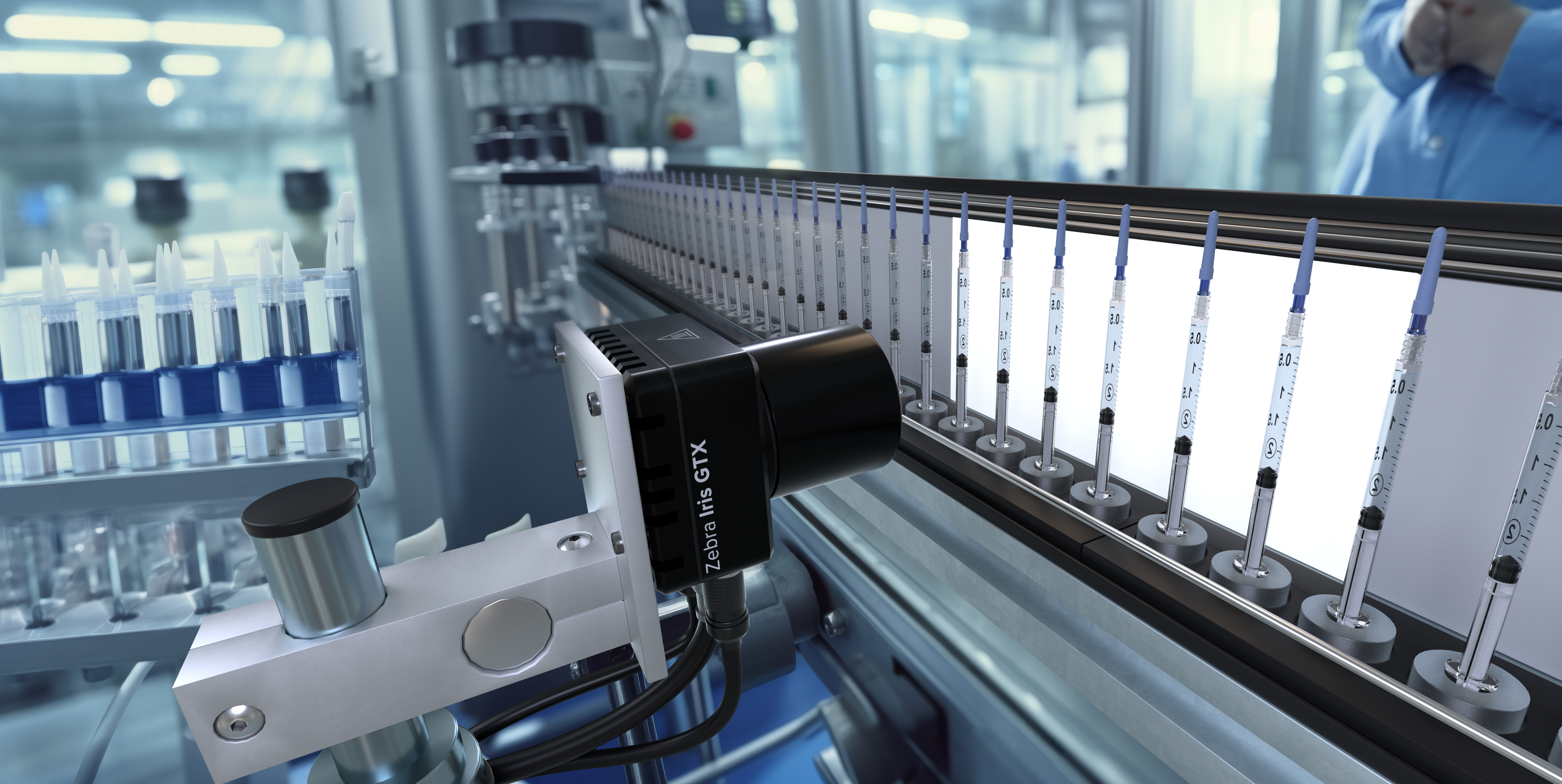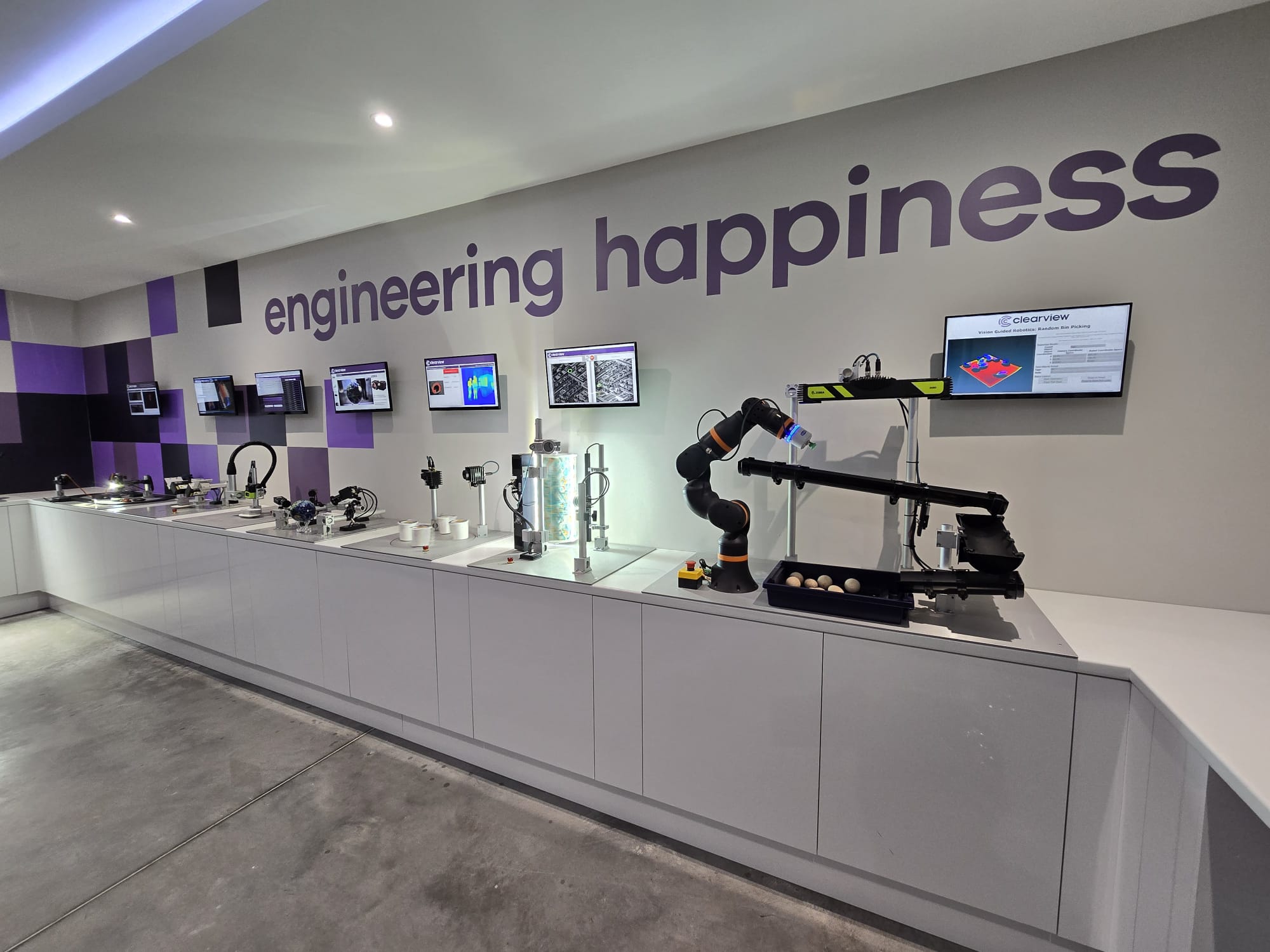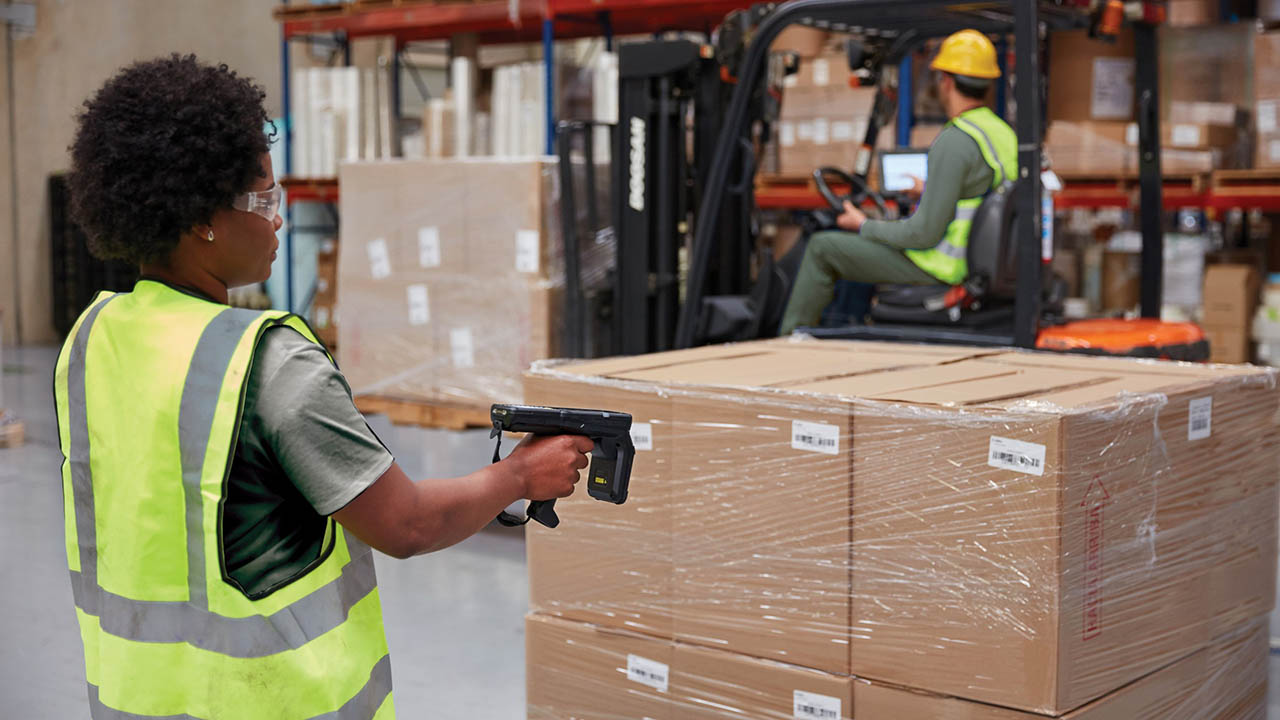Transform retail operations with Zebra’s retail technology solutions, featuring hardware and software for improving inventory management and empowering teams.
Streamline operations with Zebra’s healthcare technology solutions, featuring hardware and software to improve staff collaboration and optimize workflows.
Enhance processes with Zebra’s manufacturing technology solutions, featuring hardware and software for automation, data analysis, and factory connectivity.
Zebra’s transportation and logistics technology solutions feature hardware and software for enhancing route planning, visibility, and automating processes.
Learn how Zebra's public sector technology solutions empower state and local governments to improve efficiency with asset tracking and data capture devices.
Zebra's hospitality technology solutions equip your hotel and restaurant staff to deliver superior customer and guest service through inventory tracking and more.
Zebra's market-leading solutions and products improve customer satisfaction with a lower cost per interaction by keeping service representatives connected with colleagues, customers, management and the tools they use to satisfy customers across the supply chain.
Empower your field workers with purpose-driven mobile technology solutions to help them capture and share critical data in any environment.
Zebra's range of Banking technology solutions enables banks to minimize costs and to increase revenue throughout their branch network. Learn more.
Zebra's range of mobile computers equip your workforce with the devices they need from handhelds and tablets to wearables and vehicle-mounted computers.
Zebra's desktop, mobile, industrial, and portable printers for barcode labels, receipts, RFID tags and cards give you smarter ways to track and manage assets.
Zebra's 1D and 2D corded and cordless barcode scanners anticipate any scanning challenge in a variety of environments, whether retail, healthcare, T&L or manufacturing.
Zebra's extensive range of RAIN RFID readers, antennas, and printers give you consistent and accurate tracking.
Choose Zebra's reliable barcode, RFID and card supplies carefully selected to ensure high performance, print quality, durability and readability.
Zebra's location technologies provide real-time tracking for your organization to better manage and optimize your critical assets and create more efficient workflows.
Zebra's rugged tablets and 2-in-1 laptops are thin and lightweight, yet rugged to work wherever you do on familiar and easy-to-use Windows or Android OS.
With Zebra's family of fixed industrial scanners and machine vision technologies, you can tailor your solutions to your environment and applications.
Zebra’s line of kiosks can meet any self-service or digital signage need, from checking prices and stock on an in-aisle store kiosk to fully-featured kiosks that can be deployed on the wall, counter, desktop or floor in a retail store, hotel, airport check-in gate, physician’s office, local government office and more.
Adapt to market shifts, enhance worker productivity and secure long-term growth with AMRs. Deploy, redeploy and optimize autonomous mobile robots with ease.
Discover Zebra’s range of accessories from chargers, communication cables to cases to help you customize your mobile device for optimal efficiency.
Zebra's environmental sensors monitor temperature-sensitive products, offering data insights on environmental conditions across industry applications.
Enhance frontline operations with Zebra’s AI software solutions, which optimize workflows, streamline processes, and simplify tasks for improved business outcomes.
Zebra Workcloud, enterprise software solutions boost efficiency, cut costs, improve inventory management, simplify communication and optimize resources.
Keep labor costs low, your talent happy and your organization compliant. Create an agile operation that can navigate unexpected schedule changes and customer demand to drive sales, satisfy customers and improve your bottom line.
Drive successful enterprise collaboration with prioritized task notifications and improved communication capabilities for easier team collaboration.
Get full visibility of your inventory and automatically pinpoint leaks across all channels.
Reduce uncertainty when you anticipate market volatility. Predict, plan and stay agile to align inventory with shifting demand.
Drive down costs while driving up employee, security, and network performance with software designed to enhance Zebra's wireless infrastructure and mobile solutions.
Explore Zebra’s printer software to integrate, manage and monitor printers easily, maximizing IT resources and minimizing down time.
Make the most of every stage of your scanning journey from deployment to optimization. Zebra's barcode scanner software lets you keep devices current and adapt them to your business needs for a stronger ROI across the full lifecycle.
RFID development, demonstration and production software and utilities help you build and manage your RFID deployments more efficiently.
RFID development, demonstration and production software and utilities help you build and manage your RFID deployments more efficiently.
Zebra DNA is the industry’s broadest suite of enterprise software that delivers an ideal experience for all during the entire lifetime of every Zebra device.
Advance your digital transformation and execute your strategic plans with the help of the right location and tracking technology.
Boost warehouse and manufacturing operations with Symmetry, an AMR software for fleet management of Autonomous Mobile Robots and streamlined automation workflows.
The Zebra Aurora suite of machine vision software enables users to solve their track-and-trace, vision inspection and industrial automation needs.
Zebra Aurora Focus brings a new level of simplicity to controlling enterprise-wide manufacturing and logistics automation solutions. With this powerful interface, it’s easy to set up, deploy and run Zebra’s Fixed Industrial Scanners and Machine Vision Smart Cameras, eliminating the need for different tools and reducing training and deployment time.
Aurora Imaging Library™, formerly Matrox Imaging Library, machine-vision software development kit (SDK) has a deep collection of tools for image capture, processing, analysis, annotation, display, and archiving. Code-level customization starts here.
Aurora Design Assistant™, formerly Matrox Design Assistant, integrated development environment (IDE) is a flowchart-based platform for building machine vision applications, with templates to speed up development and bring solutions online quicker.
Designed for experienced programmers proficient in vision applications, Aurora Vision Library provides the same sophisticated functionality as our Aurora Vision Studio software but presented in programming language.
Aurora Vision Studio, an image processing software for machine & computer vision engineers, allows quick creation, integration & monitoring of powerful OEM vision applications.
Adding innovative tech is critical to your success, but it can be complex and disruptive. Professional Services help you accelerate adoption, and maximize productivity without affecting your workflows, business processes and finances.
Zebra's Managed Service delivers worry-free device management to ensure ultimate uptime for your Zebra Mobile Computers and Printers via dedicated experts.
Find ways you can contact Zebra Technologies’ Support, including Email and Chat, ask a technical question or initiate a Repair Request.
Zebra's Circular Economy Program helps you manage today’s challenges and plan for tomorrow with smart solutions that are good for your budget and the environment.
The Zebra Knowledge Center provides learning expertise that can be tailored to meet the specific needs of your environment.
Zebra has a wide variety of courses to train you and your staff, ranging from scheduled sessions to remote offerings as well as custom tailored to your specific needs.
Build your reputation with Zebra's certification offerings. Zebra offers a variety of options that can help you progress your career path forward.
Build your reputation with Zebra's certification offerings. Zebra offers a variety of options that can help you progress your career path forward.
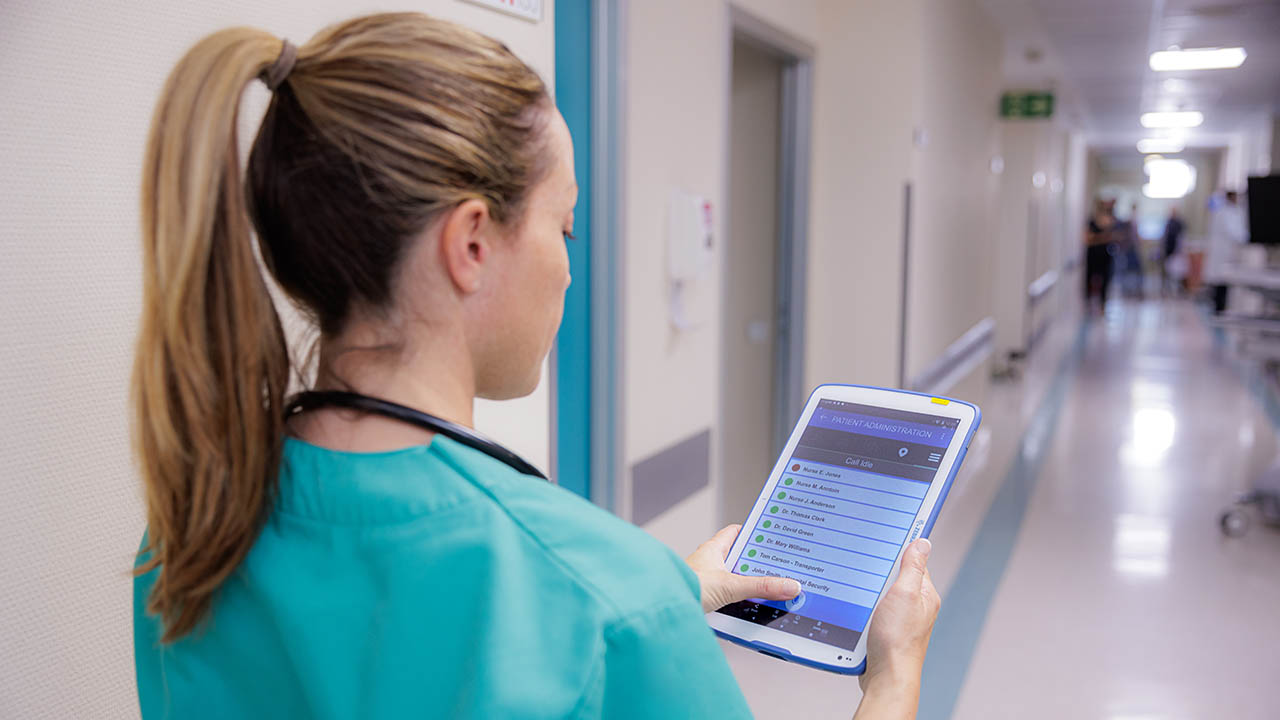
Safety at the Touch of a Button: A Key to Retaining Staff in Hospitals, Clinics and Ambulatory Surgical Centers
As healthcare providers, or even as patients, we are aware that this is an environment where situations get intense, and fast. Sometimes this intensity results in something positive, like a new life being brought into the world, or another life being saved. Unfortunately, other times this intensity leads to much darker, even dangerous situations.
For example, violence in the workplace is on the rise across several industries, with the U.S. Bureau of Labor Statistics reporting that healthcare and social services workers are five times more likely to be injured due to workplace violence.
My nursing colleagues can recall countless examples of times when patients, or their family members, made them feel unsafe or became physically threatening – you probably can too. This violence is not talked about enough and often goes unreported. As nurses, we understand that we are interacting with people who are often having the worst day of their life, and it is in our nature to empathize with them. We have a culture of prioritizing patients, sometimes over our own safety. The reality is, though, that our safety helps our patients. Although difficult, it is imperative to draw the line once interactions cross the line into verbal or physical abuse.
Hospital administrators have a responsibility to keep providers and patients safe. Hospitals are a place for healing, not harm. And while security teams do their best to keep us safe, they can’t be everywhere all the time. That is why hospital administrators need to equip providers with tools that promote a culture of safety and real-time event reporting.
What kind of tools can help providers feel safe in the workplace?
Ideally, every clinician should have a single healthcare-grade mobile device – either a handheld device the size of a smartphone or a tablet – that can facilitate rapid emergency communication, streamline incident reporting, and help first responders locate staff even if they can’t talk or text. This will require the right combination of communications software and on-device features, such as a duress button that can initiate a call for help instantly. But making providers feel safe will take much more than just the ability to push a button. That’s why you need to ask them a few questions:
Do you feel like you could easily call for help in an emergency situation?
Hospitals and clinics are delicate places. When something dangerous is happening, it isn’t just disruptive and dangerous to a provider – it can be dangerous to patients and families in the room and those on the floor. It is scary for everyone. Being able to get security to come to address the issue as soon as possible is imperative.
But I know that some nurses don’t have a means to call for help from within a room – or without calling attention to themselves. Some may have to run to the nurses’ station, while others may have to make a voice call that could put them in danger. Even worse, it’s possible that they’re instructed to call in-house security. What if security teams are not in a position to pick up the phone and talk? How do providers relay information to them about what’s happening or get confirmation that their alert has been received and help is on the way?
These are all good questions, right? This is why I’ve started becoming a lot more interested in a very specific mobility solution I’ve seen used in other hospitals. Those in the technology industry call it a “unified communications” solution. But it’s basically a healthcare-grade mobile device that runs software like Zebra’s Workforce Connect platform to enable providers to use instant messaging, voice calling, or pressing pre-programmed buttons to request help urgently. You can alert the right people however it’s easiest and safest in that moment using pre-built emergency contact lists or a direct connect to security teams.
In fact, I want to underline the importance of being able to have a mobile device with a one-touch, pre-programmed button that can be discreetly clicked to request help.
I’ve actually been in a situation before in which it would have been really helpful to have a help button in my pocket. I went to a patient’s room to check up on them and a family member was getting agitated because treatment wasn’t working as quickly or effectively as they wanted. They approached me, and I wasn’t sure what they were going to do. I couldn’t pull out my phone and dial for security because that may have further raised tensions, so my only recourse was to help them. However, trying to help them by myself, without anyone else knowing what was going on, was risky as things could have escalated quickly.
That is why your providers need pre-programmed buttons on their mobile devices. It is far safer for me in a situation like I just described to be able to put my hand in my pocket, feel the button on the back of my device, press it, and then know that security and administrators know that I need help – all while being able to use my voice to calm the situation down.
Now, I realize that being able to call for help is one thing. Reaching those who can help and being able to direct them to the situation is another. That’s why the next question is just as important to ask….
Do you trust that security staff and other first responders will reach emergent situations quickly?
In large healthcare facilities, knowing the precise location of staff at all times is essential for their safety. They may not be able to verbalize it or send an IM.
That’s why deploying location-tracking technology in conjunction with the unified communication software and mobile device is so important. It’s the only way for administrators, security staff and other responders to know exactly where your providers are when they need help – or where everyone else is should a lockdown or evacuation become necessary. At the same time, equipping security team members with the same type of mobility solution will make it easier for dispatchers and first responders to locate and send the appropriate resources for each type of incident. If it’s a shooting, for example, both armed security and emergency medical responders will be needed on the scene. So, they can quickly find and reach those people using a web-based dashboard that pinpoints everyone’s location to know exactly who to call and how to direct them to the scene. They’ll even be able to track their movements to communicate status back to the provider who first called for help.
Something else to think about is a scenario when a healthcare provider suffers a medical emergency and becomes unresponsive. Perhaps they slip and fall and hit their head. If they are unconscious in a patient room or stairwell or anywhere where there may not be a lot of traffic, how are they supposed to get fast help? In this case, not even a single-push duress button would help. Yet, one thing that would is a “drop detection” feature on the mobile device they carry everywhere. For example, I know there are Zebra mobile computers that will send a distress signal out to a predetermined emergency contact list if a device hits the ground and the user doesn’t cancel the alert within a few seconds. Someone will respond quickly to that person’s location (which is confirmed via the location-tracking technology in the device), giving them the best odds of recovery. Personally, I feel every mobile device should have this as a standard feature. But they don’t, which is why I really think every hospital or clinic should only allow providers to use mobile devices that do have this capability for peace of mind that help would be sent immediately in every emergency situation – whether reported by a provider or reported by the device of an unresponsive provider.
Do your security and administrative teams have enough data to be proactive in making hospitals safer?
I touched on this earlier, but the reality is that both physical and emotional abuses of staff are underreported in healthcare settings. These days, more than ever, nurses know the importance of using our voice to advocate for change. We also know the added power that accurate data brings to our voice.
This unified communications platform can help nurses, our administrators, and our safety teams better track data on security or safety incidents and streamline event reporting and audits. When patterns start to emerge, they can be identified and addressed quickly. Nursing, admin and safety teams can proactively work together to create the right policies and implement procedures or technology to enhance staff and patient safety. In turn, we can empower staff to report incidents promptly and conveniently, which fosters a safe and secure working environment – and confidence in the safety and security of the workplace, which is vital to staff recruitment and retention.
Bottom line
If you’re not already using or looking at a mobility solution with the features and functionality I described, that should be a top priority right now. Not next month or next year, but today (or at least this week). At least schedule a call with the healthcare technology team at Zebra to learn more about how communications software like Zebra Workforce Connect works on Android and iOS devices so that, at a minimum, you can give all staff more safety tools than they have today. Learn how Workforce Connect can also be combined with location technology and healthcare-grade Zebra devices (if you’re not already using these types of mobile devices) to offer maximum protection via the duress button and other one-touch programmable buttons. Your providers – and even your patients – want to know help is only a click away should it be needed.
I realize this will require an investment that you may or may not have budgeted this year. However, any money spent on a unified communication solution will have a strong return on investment considering how much better and safer it will make the workplace for your providers. They’re spending a significant amount of their life in the hospital or clinic, and they deserve to be able to do their already difficult jobs knowing that if an emergency occurs, that they’ll get the help they need at the push of a button. And when your staff feels safe, knowing they can focus their energies on providing the best care for patients, they’ll stick around.
###
Editor’s Note:
Want to learn more about what a “unified communication solution” really is, how it can help you, and how it has helped others? Start here.
These related reads may also be of interest:
Zebra Developer Blog
Zebra Developer BlogZebra Developer Blog
Are you a Zebra Developer? Find more technical discussions on our Developer Portal blog.
Zebra Story Hub
Zebra Story HubZebra Story Hub
Looking for more expert insights? Visit the Zebra Story Hub for more interviews, news, and industry trend analysis.
Search the Blog
Search the BlogSearch the Blog
Use the below link to search all of our blog posts.
Most Recent
Legal Terms of Use Privacy Policy Supply Chain Transparency
ZEBRA and the stylized Zebra head are trademarks of Zebra Technologies Corp., registered in many jurisdictions worldwide. All other trademarks are the property of their respective owners. ©2025 Zebra Technologies Corp. and/or its affiliates.

